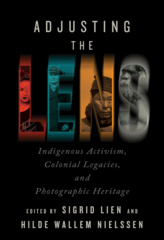
Switchbacks explores how the Nuxalk of Bella Coola, British Columbia, negotiate such complex questions as: Who owns culture? How should culture be transmitted to future generations? Where does selling and buying Nuxalk art fit into attempts to regain control of heritage?
To answer these questions, Jennifer Kramer undertook participant observation at Nuxalk artists’ studios, in the Nuxalk-run band school’s cultural education classes, and during the everyday activities of Nuxalk in their homes. She charts the fluid character of tangible material culture (such as masks and other regalia) and intangible material culture (such as songs and dances) as they moved in and out of the cultural education curriculum, the Western art market, and the Western legal system. In addition, Kramer analyzes the ambivalent reactions of the Nuxalk to ownership, appropriation, and repatriation of Nuxalk culture. The Nuxalk oscillate between essential stances, a process Kramer likens to "switchbacks" on a mountain road. Through these recurrent movements they create, recreate, and validate contemporary Nuxalk identity.
Kramer demonstrates that loss of cultural objects proves that Nuxalk culture is valuable through external affirmation. In this way, the Nuxalk use their cultural patrimony to assert their collective national identity. At stake are not only definitions of alienable and inalienable property but also a unified national identity that affords the Nuxalk a strong position from whence to reclaim traditional territory and regain self-determination in British Columbia.
Switchbacks will appeal to scholars and students interested in questions of cultural ownership and identity in general, and in Nuxalk culture in particular.
Maps
Acknowledgments
Prologue: The Repatriation of the Nuxalk Echo Mask
1 Introduction
2 The History of Bella Coola: A History of Theft
3 “Selling Out” or “Buying In”? Identity Politics and Art Objectification in Bella Coola
4 Privileged Knowledge versus Public Education: Tensions at Acwsalcta, the Nuxalk Nation “Place of Learning”
5 Physical and Figurative Repatriation: Case Studies of the Nuxalk Echo Mask and the Nuxalk Sun Mask
6 Theft Inside and Out: The Making of a Theory
7 Conclusions: Articulating Nuxalk National Identity
Notes
References
Index









